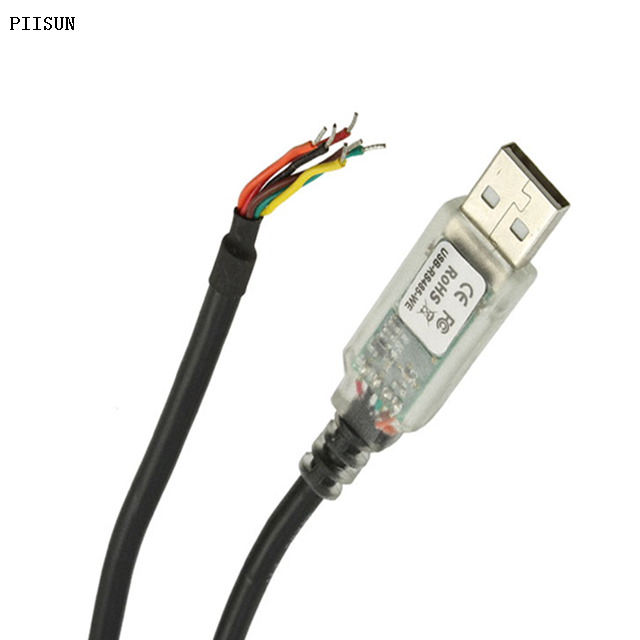Views: 0 Author: Site Editor Publish Time: 2025-08-19 Origin: Site








Have you ever wondered if RS232 is faster than USB? This question often arises when comparing the two communication standards.RS232 has been around for decades, while USB is a modern solution widely used today.In this post, we’ll explore the differences between RS232 and USB, focusing on their data transfer speeds and real-world applications.

RS232 is an older serial communication standard. It was widely used for connecting computers and peripherals. Its simplicity made it popular in early computing systems, but it has been largely replaced by newer technologies.
RS232 has limited speed capabilities. It typically supports speeds up to 115.2 kbps, though some special cases can reach 1 Mbps. This makes it slower compared to modern interfaces like USB.
RS232 is still used in legacy industrial systems and some simple peripherals. Examples include barcode scanners, printers, and embedded devices where speed isn’t a critical factor.
USB (Universal Serial Bus) is the modern standard for connecting devices to computers. It evolved from USB 1.0 to USB 3.2, offering faster speeds and more versatility with each update.
USB speeds vary depending on the version:
USB 1.0/1.1: 1.5 Mbps
USB 2.0: 480 Mbps
USB 3.0: 5 Gbps
USB 3.2: Up to 20 Gbps
These advancements have made USB far faster than RS232, especially in high-speed data transfer.
USB is used in everyday devices like laptops, printers, smartphones, and external drives. It’s the go-to connection standard for modern consumer electronics due to its speed and flexibility.
When comparing RS232 and USB, USB is clearly faster. RS232 typically maxes out at 115.2 kbps, while USB 2.0 hits 480 Mbps and newer versions like USB 3.0 and 3.2 soar to speeds of 5 Gbps and 20 Gbps, respectively.
In real-world scenarios, USB is the go-to for transferring large files quickly. For example, using USB to transfer videos is much faster than using RS232 for the same task.
USB uses differential signaling, meaning it transmits data by comparing voltage differences between two data lines. This method ensures higher speed and better signal integrity. It's also more immune to interference, allowing USB to transfer data over longer distances without losing quality.
On the other hand, RS232 uses single-ended signaling, where data is sent via a single wire relative to ground. This method makes it more vulnerable to noise and limits data transfer speeds. As the distance between devices increases, the signal quality degrades, further slowing down the transfer speed.

One major advantage of USB is its ability to deliver power along with data. USB ports can power devices, like smartphones and cameras, directly through the same connection. This is a huge benefit for modern devices, eliminating the need for separate power cables or adapters.
Another benefit is USB’s hot swapping capability. USB devices can be plugged in or unplugged without shutting down the system. In contrast, RS232 often requires both devices to be powered off before making a connection, which can be less convenient.
RS232 shines in its simplicity. It’s a reliable option for low-speed, short-distance applications where speed isn't a priority. Its straightforward design and low cost make it ideal for specific tasks that don’t require high data transfer rates.
RS232 is still favored in certain applications, like embedded systems or industrial automation. It's commonly used in legacy equipment where high-speed communication isn’t needed. For simple, low-cost setups, RS232 remains a go-to solution.
RS232 is still widely used in industrial environments, especially for connecting legacy systems. It’s common in barcode scanners, machinery controllers, and older automation systems. RS232’s simplicity makes it a reliable choice for short-distance communication where speed is not the main concern.
USB has become increasingly popular in modern industrial applications. It’s now used for high-speed data transfer in automation systems, machine controllers, and modern manufacturing equipment. USB's versatility and speed make it ideal for newer machinery that requires fast data exchange.
To bridge the gap between older RS232 devices and modern USB systems, solutions like USB-to-RS232 adapters are used. These adapters allow legacy RS232 devices to connect with USB ports, enabling compatibility in mixed environments where both old and new technology coexist.
RS232 is perfect for simple tasks where speed isn’t critical. For instance, it’s commonly used in industrial machines to connect sensors or embedded systems that don’t require high data transfer rates.
RS232 is also the go-to choice when working with older equipment. If you need to interface or replace outdated systems still using RS232, it remains a practical solution for seamless communication.
USB is ideal for tasks that demand high-speed data transfer. Devices like external drives, cameras, and printers benefit from USB’s fast speeds, ensuring smooth performance in data-heavy applications.
For new systems or upgrades, USB is the standard. Its versatility, speed, and ability to deliver power make it the go-to choice for building future-proof devices that meet today’s demands.
In most cases, USB is faster than RS232 due to its higher data transfer speeds. However, RS232 still serves important roles in legacy systems and simple applications.
When choosing between them, consider your needs—speed, simplicity, or compatibility.
Is your system still using RS232, or have you made the switch to USB?
A: USB uses differential signaling, allowing for higher data transfer speeds and better signal integrity compared to RS232’s single-ended signaling.
A: RS232 has limited speed, typically up to 115.2 kbps, making it unsuitable for high-speed data transfer.
A: Yes, USB-to-RS232 adapters allow legacy RS232 devices to connect with modern USB systems.
A: USB offers faster data transfer, power delivery, and ease of use for modern devices compared to RS232.